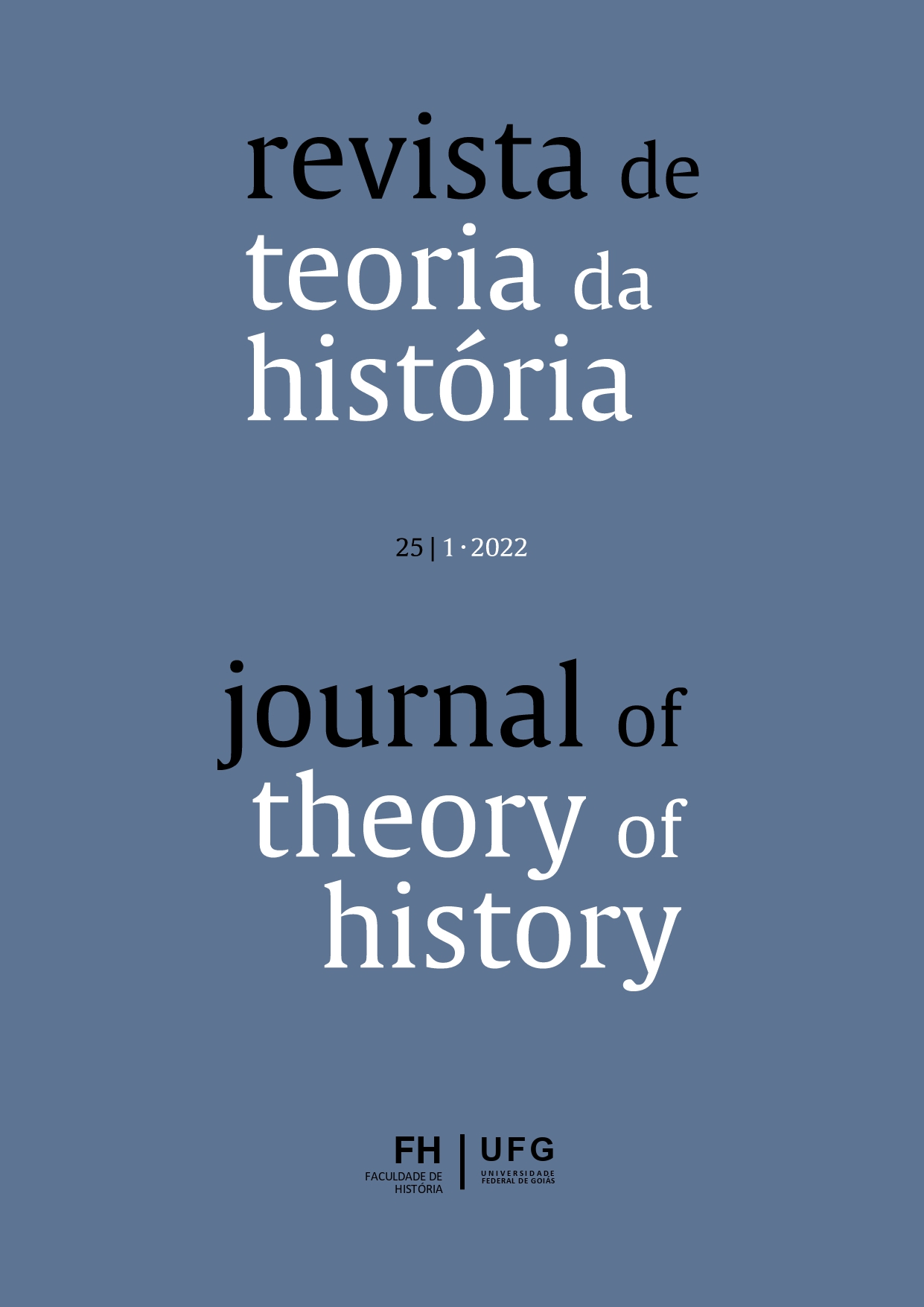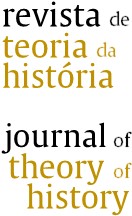The experience of the image in the history and philosophy of science
Kuhn's Legacy
DOI:
https://doi.org/10.5216/rth.v25i1.72834Keywords:
Thomas Kuhn, Image, History and Philosophy of ScienceAbstract
One of the best known names in the history of the philosophy of science is undoubtedly the American physicist Thomas Kuhn. In 1962, Kuhn published The Structure of Scientific Revolutions, a work that resonated widely, particularly among researchers in the humanities and social sciences. In his work, the author's purpose was to reformulate the identity of the natural sciences and, to this end, he resorted to history, sociology, psychology, and, also to the history of art. With a language that privileged visual experience, he claimed - among other things - that art and science were not so far apart, although they remained distinct enterprises. However, perhaps as a strategy to demarcate the fields, the philosopher of science manifested a conventional understanding about the artistic phenomenon. Yet, both in his major work and in the article "Comments [about art and Science]" (1969), he ignored the revolutionary achievements of contemporary art - with works that actually strained the traditional understanding of the activity - and, likewise, was unable to perceive the image beyond aesthetic determination. By extension, in the process of formulating scientific knowledge, it tied the visual inscription to an instrumental and subordinate function. In this sense, we follow the reflections on visual representations in the history of science, as well as in the philosophy of science, with special emphasis on Kuhn's understanding. Finally, we present some contemporary perspectives on the image and visuality in a scientific context.
References
BREDEKAMP, Horst (ed). The Technical Image. A History of Styles in Scientific Imagery. Chicago and London: The University of Chicago Press, 2015.
BUENO, Otávio. “Interpreting scientific images: aesthetic considerations at work”. In: WUPPULURI, Shyam and WU, Dali. On art and science. The Frontiers Collection, Springer Nature Switzerland AG 2019; pp. 101-115.
CASTRO, Sixto. “Las propiedades estéticas: naturaleza, arte, ciencia”, en Fernando Martínez Manrique y Luis Miguel Peris-Viñe (eds.), Sociedad de Lógica, Metodología y Filosofía de la Ciencia en España (V Congreso), Granada, MEC-Universidad de Granada-Junta de Andalucía, 2006; pp.707-710.
COSTA, Thiago. “Pitoresco, um pensamento de arte”. Domínios da Imagem, v. 9, n. 17 (2015); pp. 218-236. Doi: http://dx.doi.org/10.5433/2237-9126.2015v9n17p218
COSTA, Thiago e MARINHO, Ariadne. “Debret, Humboldt e o Brasil. Arte e ciência no Voyage pittoresque et historique”. In: COSTA, Thiago e MARINHO, Ariadne (orgs.). O jardineiro de Napoleão. Alexander von Humboldt e as imagens de um Brasil/América (séculos XVIII e XIX). Curitiba: Appris, 2019; pp. 66-88.
DARWIN, Charles. A expressão das emoções nos homens e nos animais. Tradução de Leon de Souza Lobo Garcia. São Paulo: Companhia das Letras, 2009 [1872].
DASTON, Lorraine and GALISON, Peter. “The image of objectivity”, Representations, 40 (Fall, 1992); pp. 81-128.
GUILLAUMIN, Gofrey. “El relativismo epistemológico visto a través de la teoría del cambio científico de Thomas Kuhn”. Relaciones 120, otoño 2009, vol. xxX; pp. 139-164.
FREITAS, Renan Springer de. “A sedução da etnografia da ciência”. Tempo Social, Revista de Sociologia da USP, v. 17, n. 1, junho de 2005; pp. 229-253.
HÖÖG, Victoria. “Visualising the World. Epistemic Strategies in the History of Scientific Illustrations”. Ideas in History. The journal of the Nordic Society of the History of Ideas, Volume 5, 2010 (No. 1-2); pp. 53-69.
HUMBOLDT, Alexander von. Essai sur la géographie des plantes. Paris: Levrault, Schoell et Co., Libraires, 1805.
HUMBOLDT, Alexander von. Ansichten der Natur. Stuttgart: Reclam Verlag 1992 [1a. ed. Tübingen: J. G. Cotta’schen Buchhandlung, 1808].
LYNCH, Michael and WOOLGAR, Steve (ed). Representation in scientific practice. Cambridge MA: MIT Press, 1990.
IVANOVA, Milena. “Aesthetic Values in Science”. Philosophy Compass, Volume 12, Issue 10, October 2017; pp. 01-09.
KOMOLA, Jadwiga. ““Pani z pieskiem” (“Lady with Pooch”): Ludwik Fleck’s uses of images in his epistemological works”. Transversal: International Journal for the Historiography of Science, 1, 2016; pp. 79-87.
KUHN, Thomas S. A estrutura das revoluções científicas. Tradução de Beatriz Vianna Boeira e Nelson Boeira. São Paulo: Editora Perspectiva, 2001 [1962].
KUHN, Thomas. “Posfácio, 1969”. In: KUHN, Thomas. A estrutura das revoluções científicas. Tradução de Beatriz Vianna Boeira e Nelson Boeira. São Paulo: Editora Perspectiva, 2001 [1969]; pp. 217-257.
KUHN, Thomas. “Comentários sobre a relação entre a ciência e a arte”. In: KUHN, Thomas. A tensão essencial. São Paulo: Editora Unesp, 2011 [1969]; pp. 361-373.
MAIA, C. A. A trama das ciências na sociedade liberal: as histórias das ciências, as ciências e a história. Achegas para uma história das histórias das ciências na passagem do laissez-faire ao welfare do fim das ideologias. Tese de Doutorado em História Social – Faculdade de Filosofia, Letras e Ciências Humanas, USP, 1996.
McALLISTER, JAMES. “Introduction. Recent work on aesthetics of science”. International Studies in the Philosophy of Science, Vol. 16, No 1, 2002; pp. 07-11.
MENDONÇA, André Luis de Oliveira e VIDEIRA, Antonio Augusto Passos. “Progresso científico e incomensurabilidade em Thomas Kuhn”. Scientiae Studia, São Paulo. V. 5, nº 2, 2007; pp. 169-83.
MOULINES, Carlos Ulisses. O desenvolvimento moderno da filosofia da ciência (1890-2000). Tradução Cláudio Abreu. São Paulo: Associação Filosófica Scientiae Studia, 2020 [2006].
MÖßNER, Nicola. Visual Representations in Science. Concept and Epistemology. London and New York: Routledge Taylor and Francis Group, 2018.
OLIVEIRA, José Carlos Pinto de. “Thomas Kuhn, a imagem da ciência e a imagem da arte: o primeiro manuscrito da Estrutura”. Primeira Versão, 149. Setembro de 2016, IFCH, Unicamp; pp. 3-22.
PANG, Alex Soojung-Kim. “Visual Representation and Post-Constructivist History of Science”. Historical Studies in the Physical and Biological Sciences, vol. 28, No. 1, 1997, pp. 139-171.
PENNA-FORTE, Marcelo do Amaral. Iconografia Científica: um estudo sobre as representações visuais na ciência. Tese de Doutoramento em Filosofia, Universidade Estadual de Campinas, SP: 2006.
PRODGER, Phillip. Darwin’s camera: art and photography in the theory of evolution. New York, Oxford University Press, 2009.
ROOT-BERNSTEIN, Robert Scott. “On paradigms and revolutions in science and art: the challenge of interpretation”. Art Journal, vol. 44, nº 2, Art and Science: Part I, Life Sciences (Summer, 1984), pp. 109-118.
RUDWICK, Martin “Emergence of a visual language for eological science (1760-1840)”. Hist. Sci., XIV, 1976; pp. 149-195.
WHITE, JR., Lynn. “Natural Science and Naturalistic Art in the Middle Ages”. The American Historical Review, Vol. 52, No. 3, Apr., 1947; pp. 421-435.
WHITE, Hayden. “The tasks of Intellectual History”. The Monist, Volume 53, Issue 4, 1 October 1969; pp. 606-630.
WISE, M. Norton. “Making visible”. ISIS, 97, march 2006; pp. 75-82.
VATTIMO, Gianni. O Fim da Modernidade. Niilismo e hermenêutica na cultura pós-moderna. Tradução de Eduardo Brandão. São Paulo: Martins Fontes, 1996 [1985].
Downloads
Published
How to Cite
Issue
Section
License
Copyright (c) 2022 rth |

This work is licensed under a Creative Commons Attribution-NonCommercial-NoDerivatives 4.0 International License.
The journal publishes only and exclusively original manuscripts. All rights reserved.
Licensed under a Creative Commons Attribution-NonCommercial-NoDerivatives 4.0 International License



